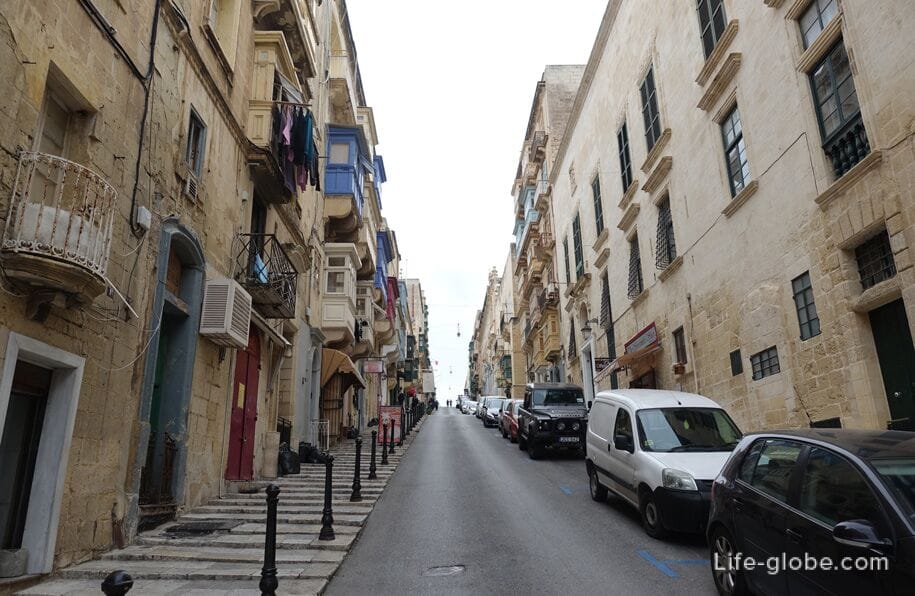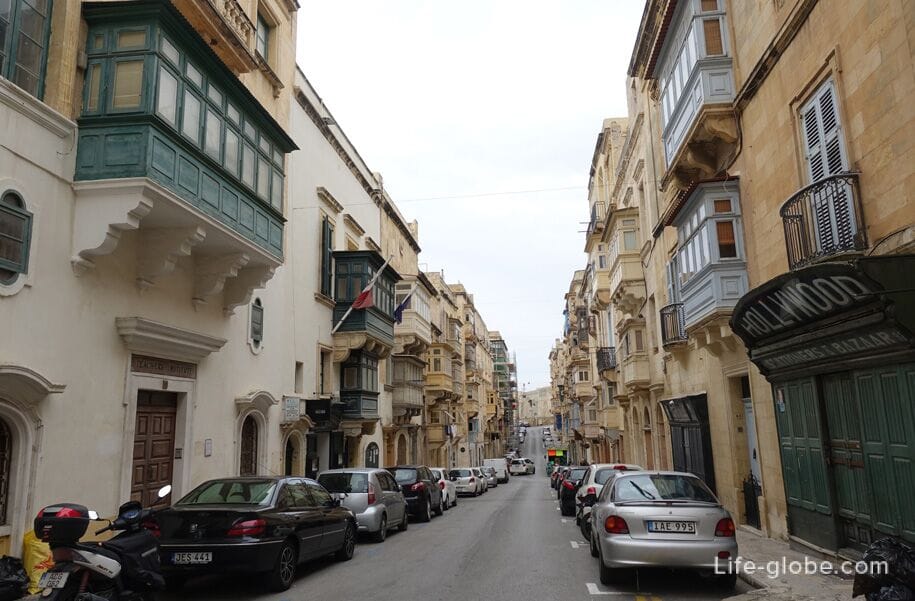
Republic street, also known as street Repubblica (the Maltese name Triq Ir-Repubblika, formerly Kingsway) - the main tourist street of Valletta, besides, the Central street that divides the town exactly in half along its length.
Republic Street is one of the widest and busiest streets in the city, stretching from the City Gate (Triton Fountain) to Fort St. Elmo (sea line), where it meets Elma Place Street (St. Elmo Place). The length of the street is approximately 900 meters.
After the Great Siege of Malta, the Order of St. John planned Valletta and built it according to a grid pattern, while Republic Street (then Strada San Giorgio) lay in the center of the city to become the main street of the city.
Throughout history the street had several names during the French occupation of Malta it was called the National (Rue Nationale), during the Royal colony of Malta was called Strada Reale (Strada Reale), and in the period of anglicization Malta street was named Kingsway.
Republic street was badly bombed during the Second world war.
Nowadays Republic street is the main artery of the city. Along the street are concentrated shops, cafes and restaurants, there are some important attractions and small squares.
Republic Street is intended mainly for pedestrians with extremely limited use of vehicles. Travel is allowed only for cars with a commercial purpose, as well as administrative cars.
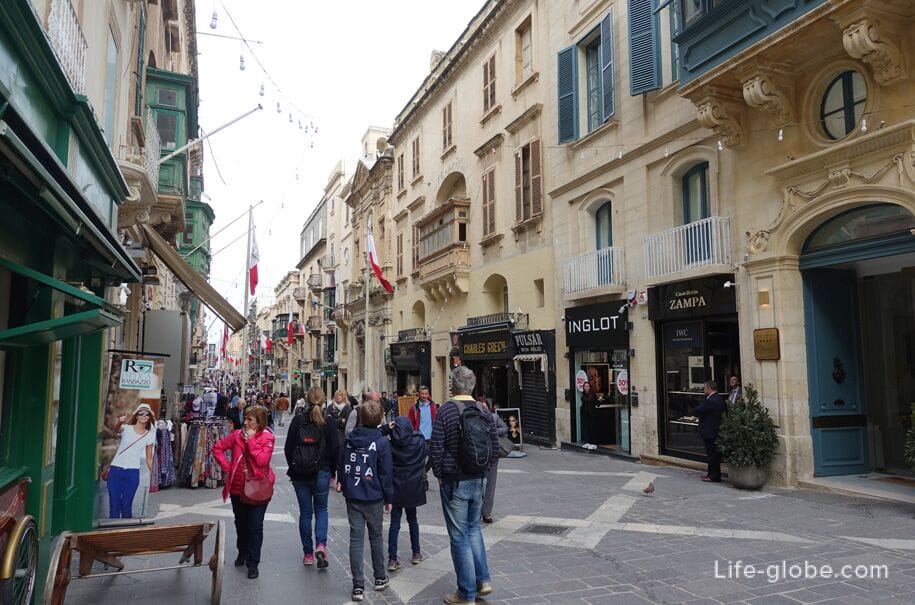
The busiest part of the street of the Republic originates from the Main city gate of Valletta, near the fountain of Triton.
City gate (a Maltese called Bieb il-Belt), which literally means "Door to city" - the former gate, located at the entrance to Valletta, forming part of the former city walls (fortifications) of the town. Now the gates mark the beginning of Republic street.
The first gate which stood on this spot was Porto San Giorgio was built in 1569. The gate was renamed the Porta Reale (Putirjal) in about 1586, and was then again rebuilt in 1633. In 1853 the gate was replaced with a larger. The gate also informally called Porta di terra (which means "land gate"), because it was the only land passage into the city.
The last fortified gate was demolished in 1964, they were replaced by a futuristic gate, designed by the architect Alziro Bergonzo.
The current gate, which is the fifth on this site, was built in the period from 2011 to 2014 by the Italian architect Renzo Piano. The entrance to the city gates is carried out on a bridge that runs over a deep moat, which now has a parking lot and a park area.
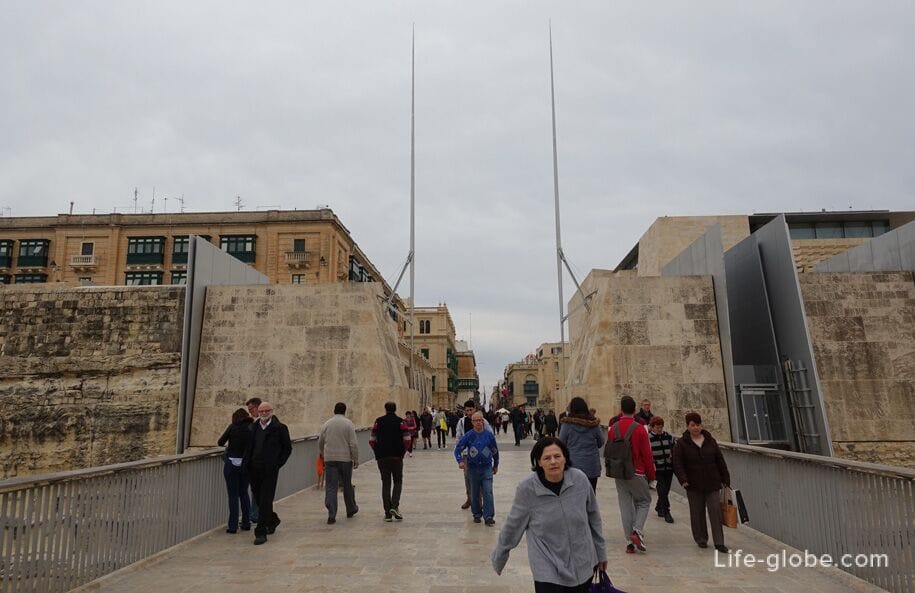
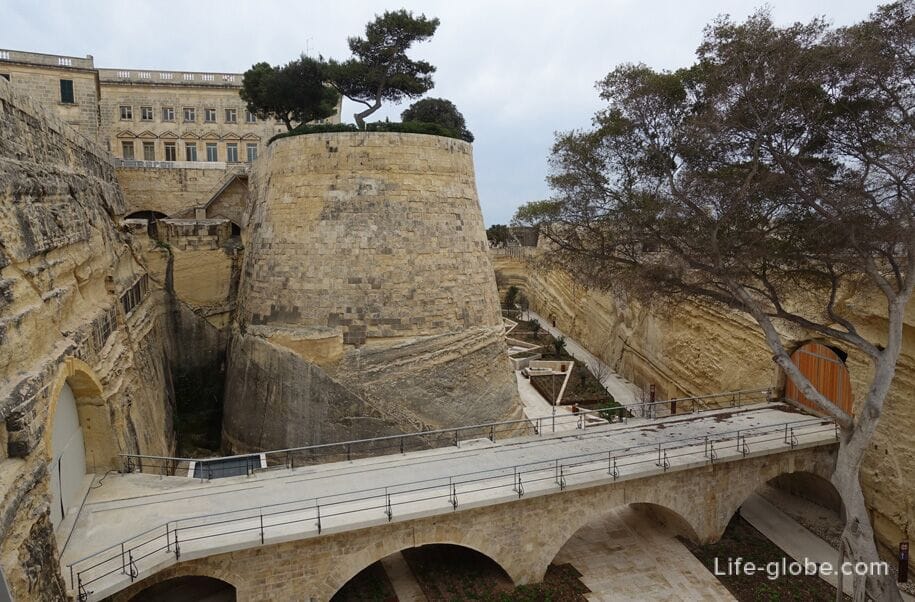
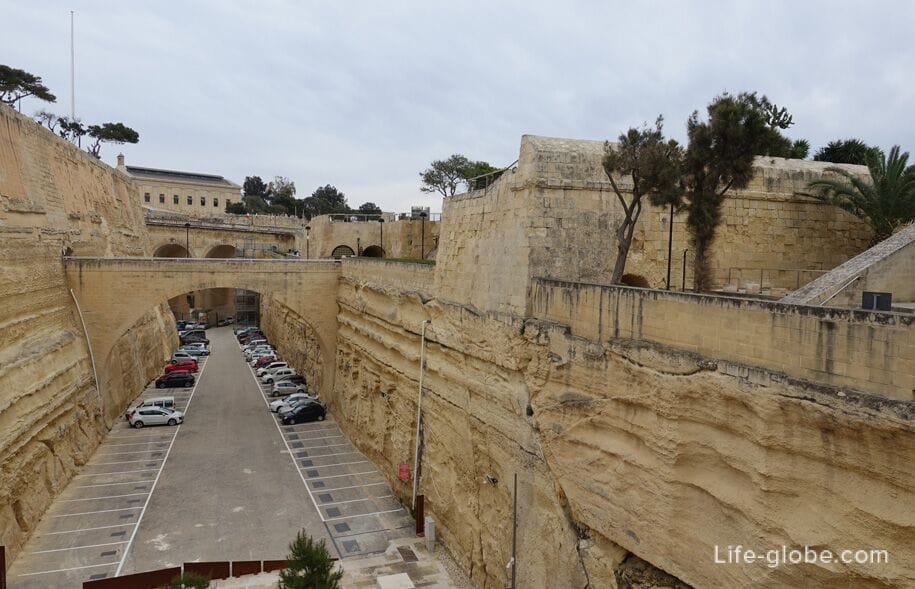
To the city gates, from the side of the city, from the southern and northern sides lead the Spanish steps.
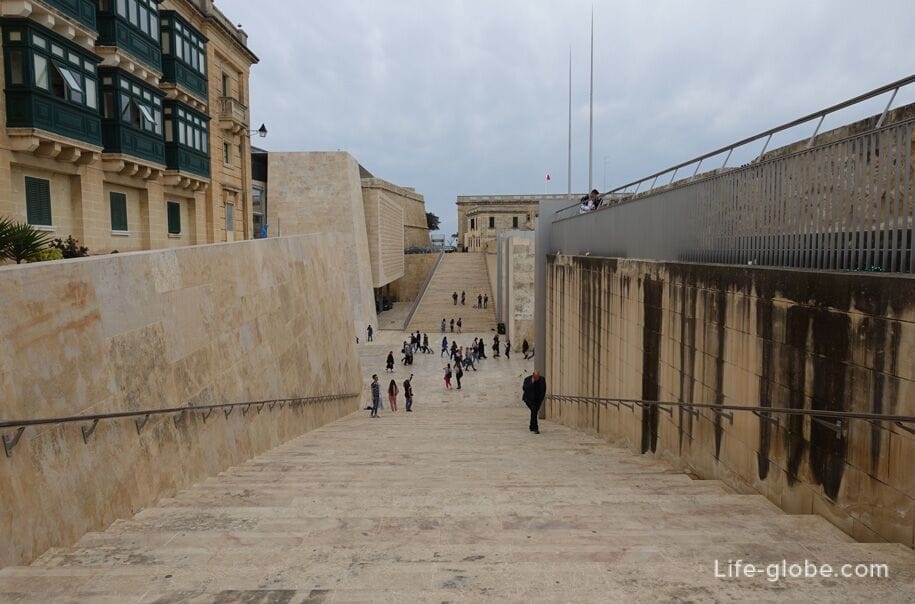
Just outside the city gate lies Freedom square (Misrah IL-Ħelsien).
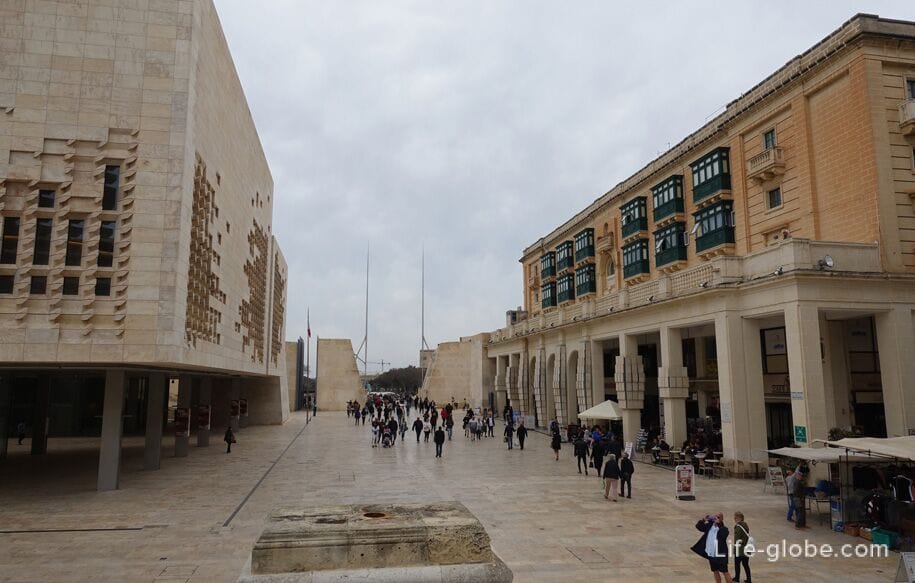
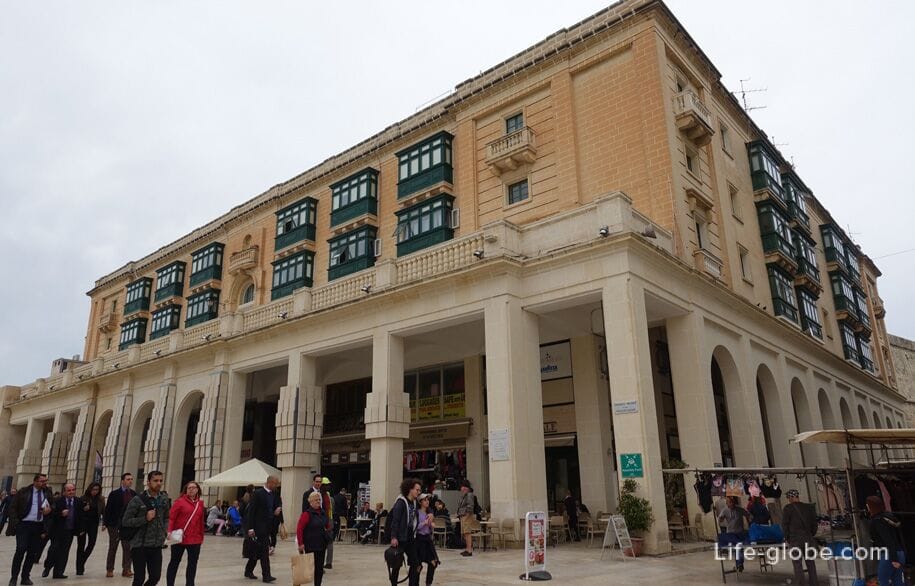
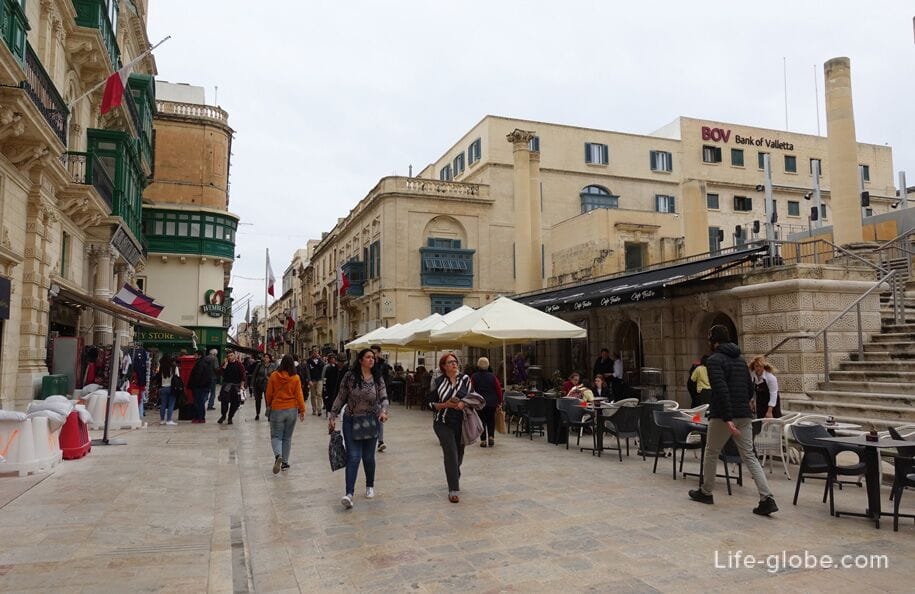
In Liberty square are:
- the building of the Parliament of Malta, built between 2011 and 2015 by Renzo Piano;
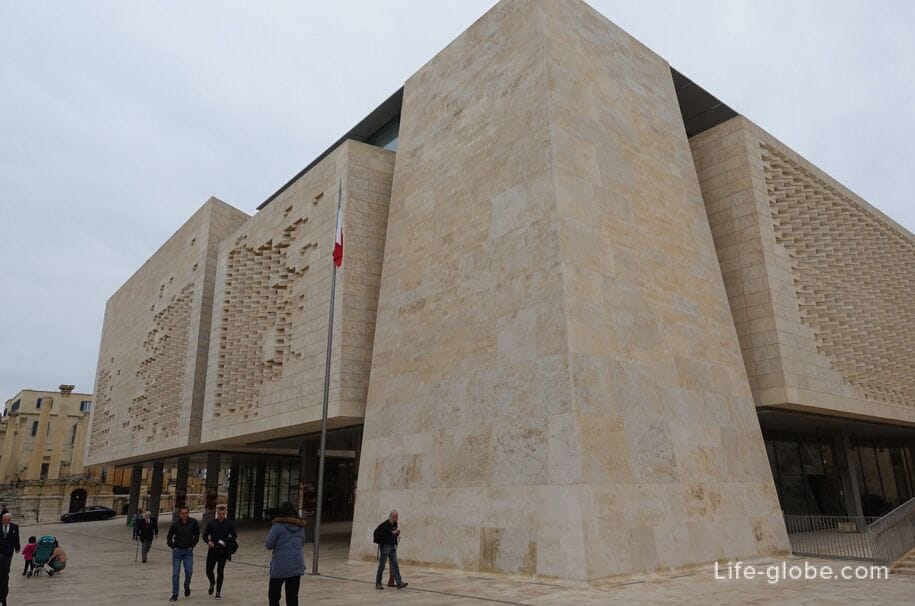
- the remains of the Royal Opera house (It-Teatru Rjal), erected in 1866. It was one of the most beautiful and iconic buildings in Valletta. The theatre received a direct hit from aerial bombing in 1942 during the Second world war. After several abandoned plans to rebuild the theatre, the ruins were redesigned by Italian architect Renzo Piano, and in 2013 the theatre again began to function as a concert hall under open sky (Pjazza Teatru Rjal).
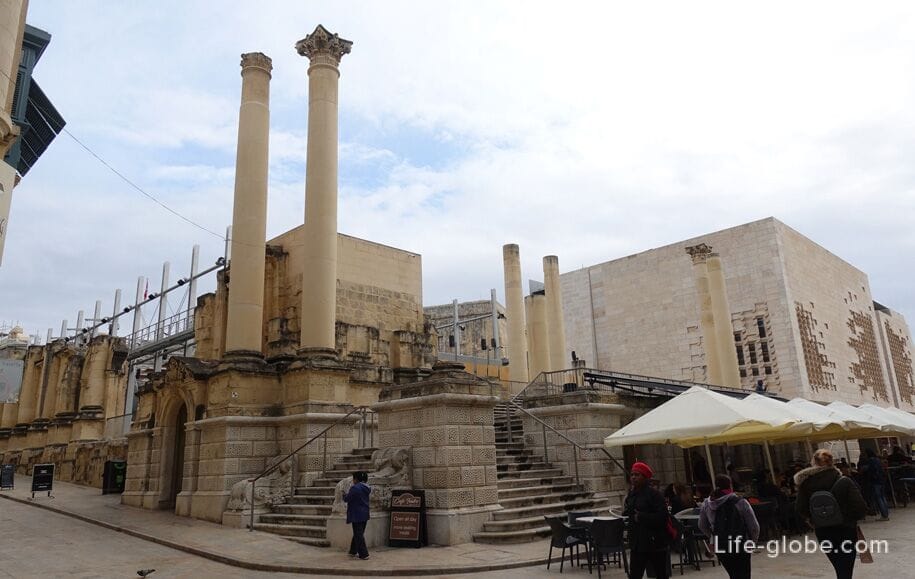
City gate, Parliament building and the Teatro Real was built (rebuilt, rebuilt) in the framework of the project "City gate";
- Palazzo Ferreria (Palazzo Ferreria, the official name of Palazzo Buttiġieġ-Francia) - Palace built in the late 19th century by the architect Giuseppe Bonavia. It was the first building, which introduced the fashion on the famous wooden balconies on the facades of the houses on the Islands of Malta. The Palace is the national monument of the 1st class.
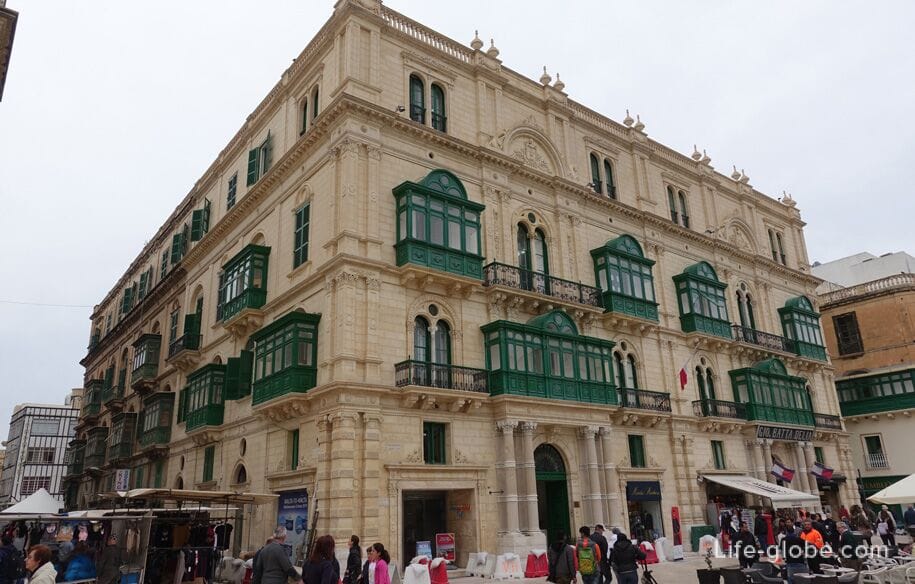
From freedom square, Republic street narrows and becomes a lively place for a stroll.
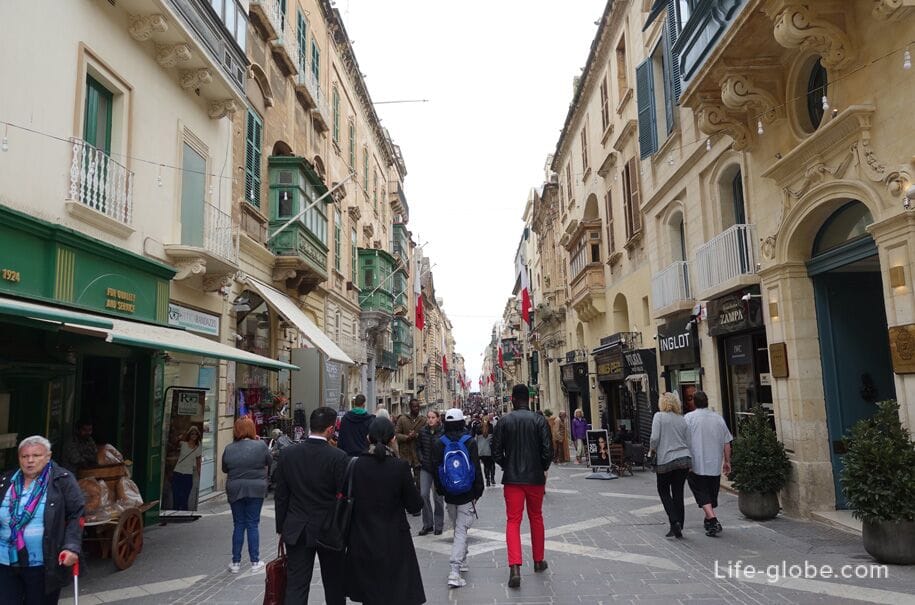
The Church of St. Barbara or Santa Barbara (Knisja ta' Santa Barbara), built in 1573 in the style of Baroque for Olive Order.
The Church was restored in 1601 and completely rebuilt in 1739. The look of the new Santa Barbara Church was designed by Italian architect Romano Carapecchia. In the center of the facade, above the door of the Church, you can see a large gilded statue of the Immaculate Conception, established in 1904 in honor of the anniversary of the Immaculate Conception.
Inside the Church has an oval dome typical of the Baroque period.
Today the Church serves as the parish Church for English, French and German speaking communities.
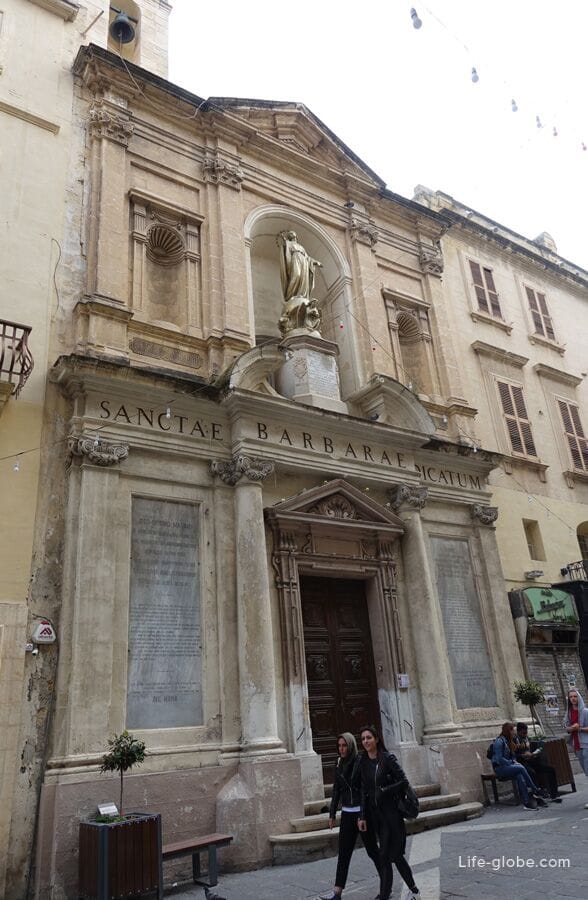
St. Francis of Assisi Church (San Franġisk t'assisi), built in 1598, and finally completed by 1607.
A few decades after the construction, the Church originated structural defects and in 1681 it was built anew thanks to Grand Master Gregorio Carafa, whose coat of arms adorns the facade of the Church.
The church was enlarged in the 1920s following plans by Emanuel Borg, which also included a dome. This implied the removal of some of the frescos by Giuseppe Calì, which were replaced with others by Gianni Vella.
In the Church are still preserved valuable works of art, including paintings by Mattia Preti, Pietro Gagliardi and Filippo Paladini, as well as the titular statue of St Francis.
The church building is listed on the National Inventory of the Cultural Property of the Maltese Islands.
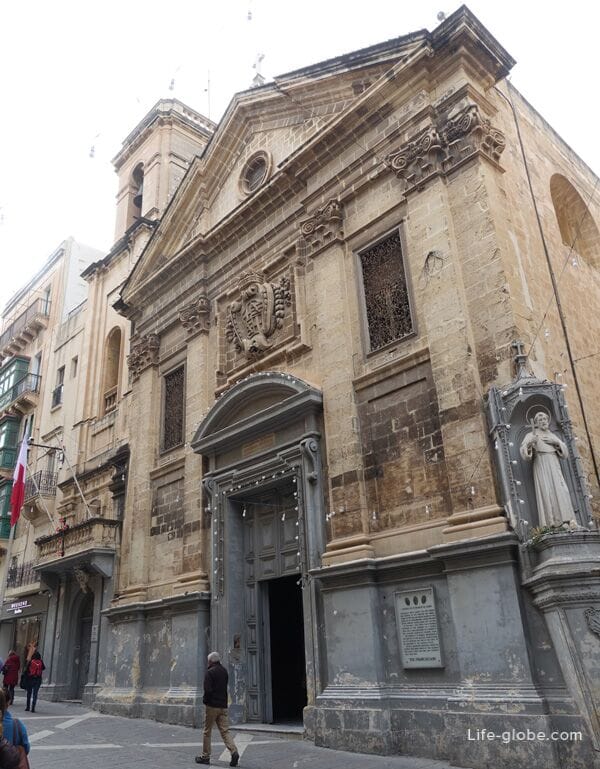
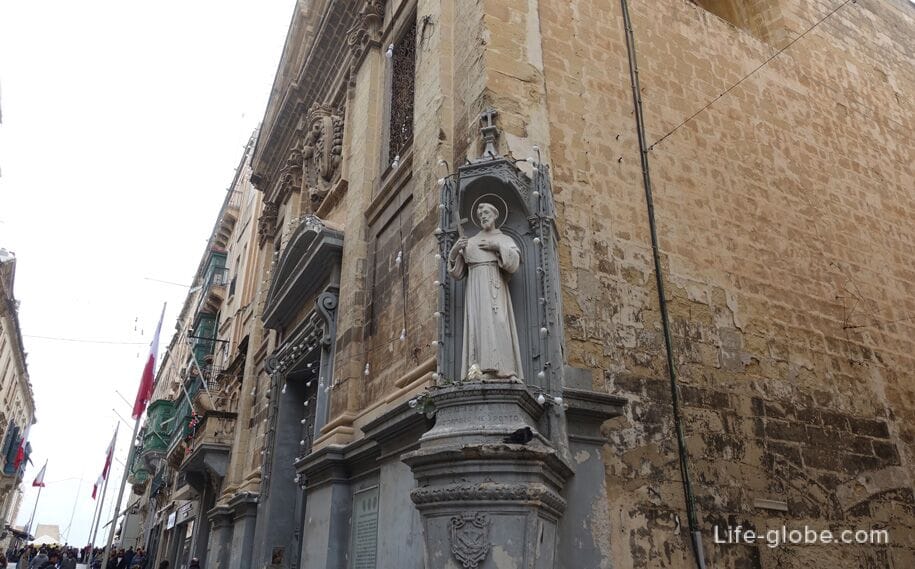
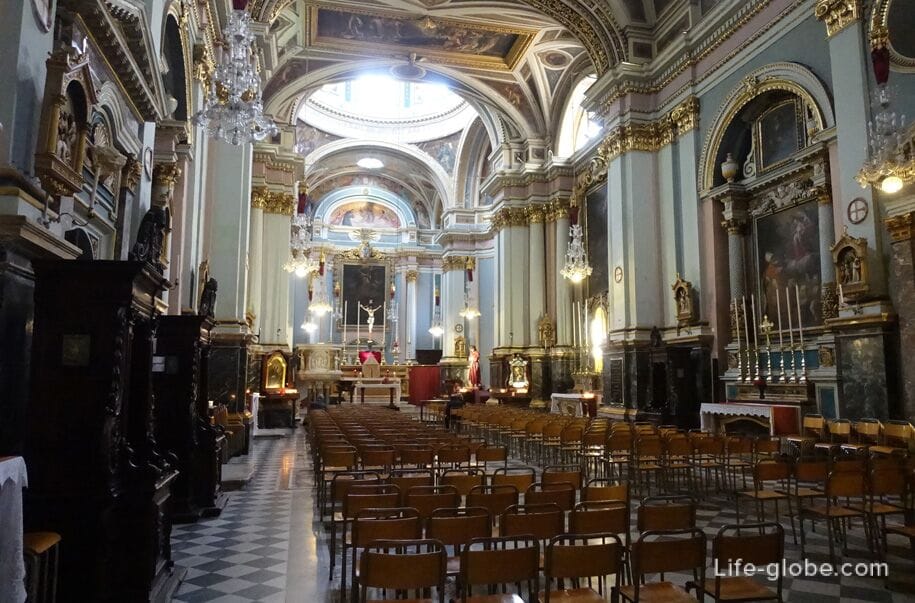
Republic Street
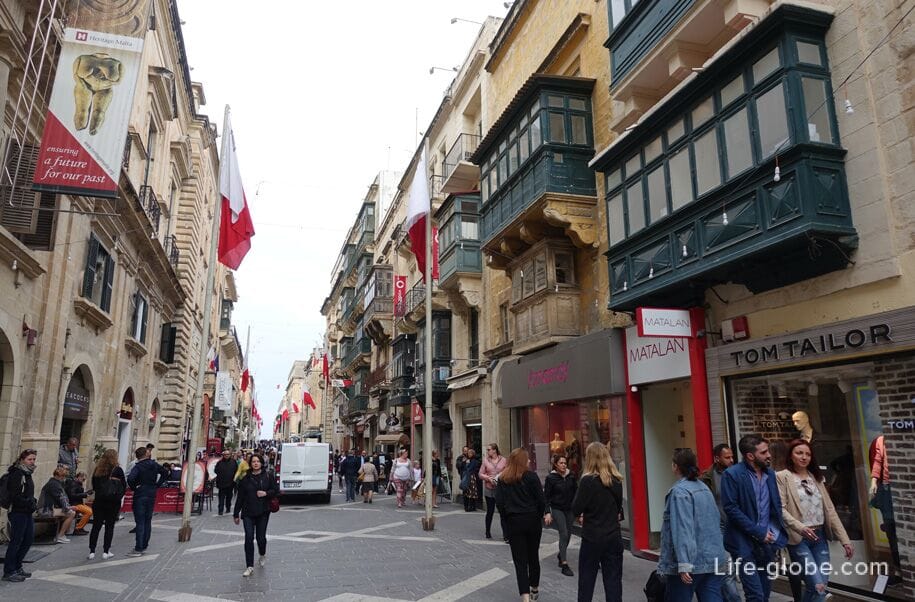
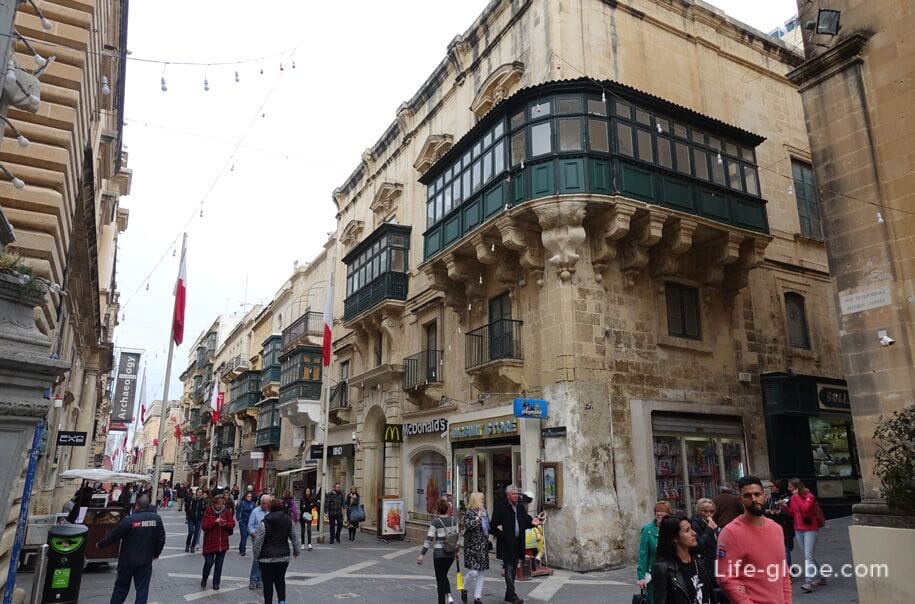
Maltese bread (2 Euros)


National Museum of Archaeology, originally built in 1958 and is a Maltese Museum of prehistoric artifacts collected on the Maltese Islands, starting from the phase of Ghar dalam (5200 BC), the earliest appearance of settlement on the island, to Tarxien phase (2500 BC) and later times. On the second floor of the Museum sometimes hosts temporary exhibitions.
The Museum is located in the building in the Baroque style, built to the order of St John in 1571. The entrance to the Museum is 5 Euros.
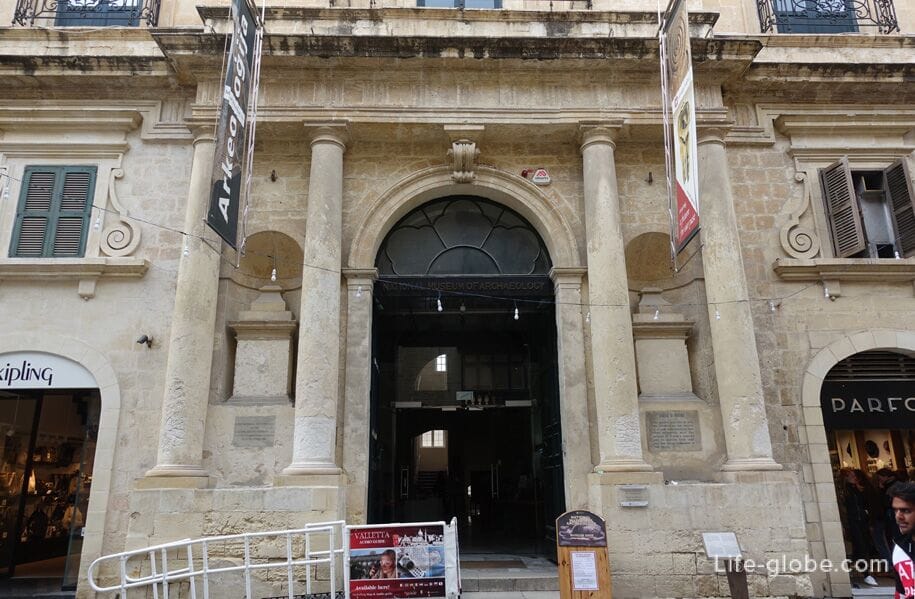
Republic Street
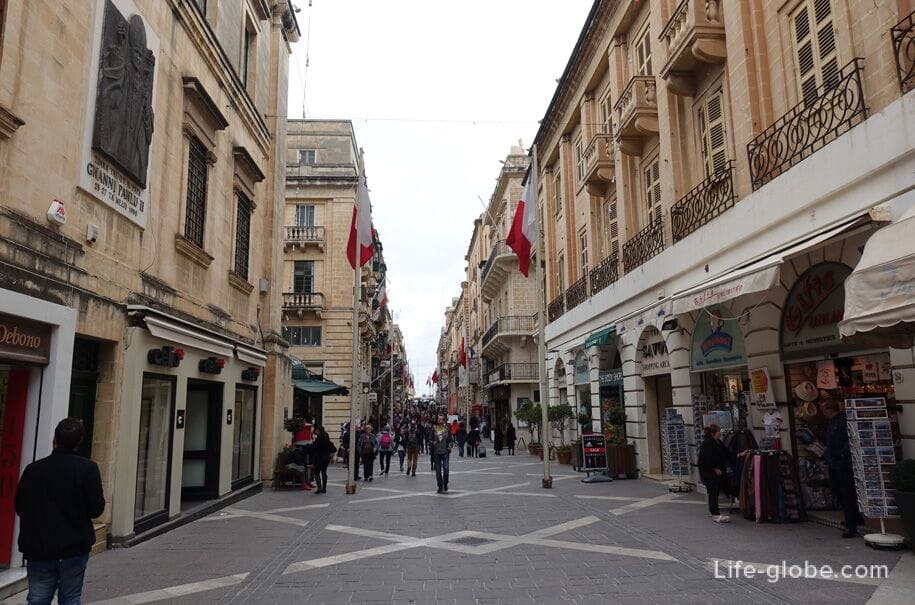

The Great Siege Square is one of the Central squares of Valletta, the perimeter of which has several historic buildings, monuments and memorials, there is also a café and a restaurant.
On the great siege square comes out the end of the main Cathedral in Valletta - St. John's Cathedral. The square is the entrance to the Cathedral, while the main entrance to the Cathedral is located near the square of St. John.

The square is decorated with a striking monument of the great siege (Great Siege Monument) - a monument by the famous Maltese sculptor Antonio Sciortino, opened in 1927 in memory of the victims of the great siege of 1565.
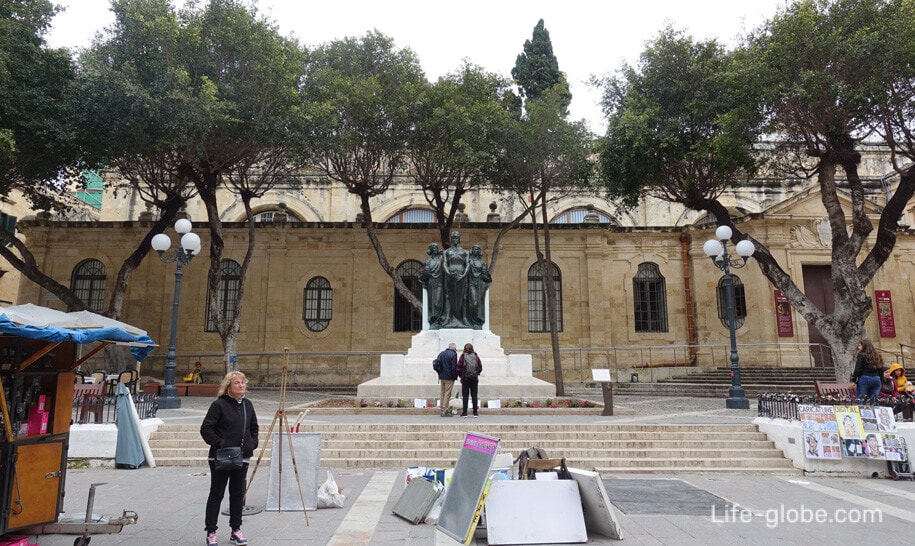
Opposite the monument is the Courts of Justice building, built in neoclassical style between 1965 and 1971 on the site of Auberge d'Auvergne, erected by the Knights of the Order of St. John and destroyed by aerial bombardment in 1941 during World War II.
The courthouse built by the architect Jo Tonna in the neoclassical style, and its main feature is a portico with tall columns. Read more about the great siege square in Valletta...

Republic Street
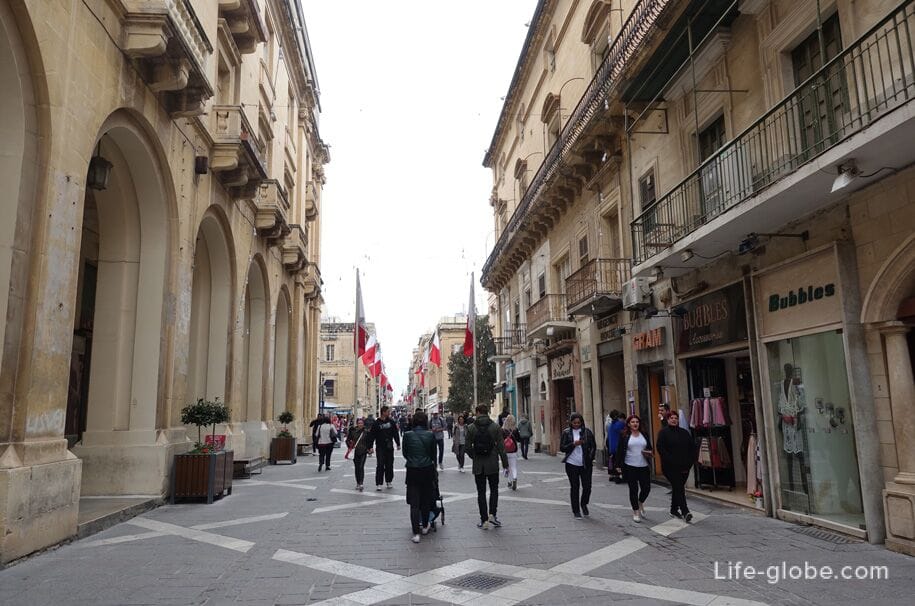
Republic square (Misraħ ir-Repubblika) - one of the most popular areas of Valletta.
Republic square is decorated with:
- the National library of Malta, near which is located the statue of Queen Victoria and cafes under the open sky;
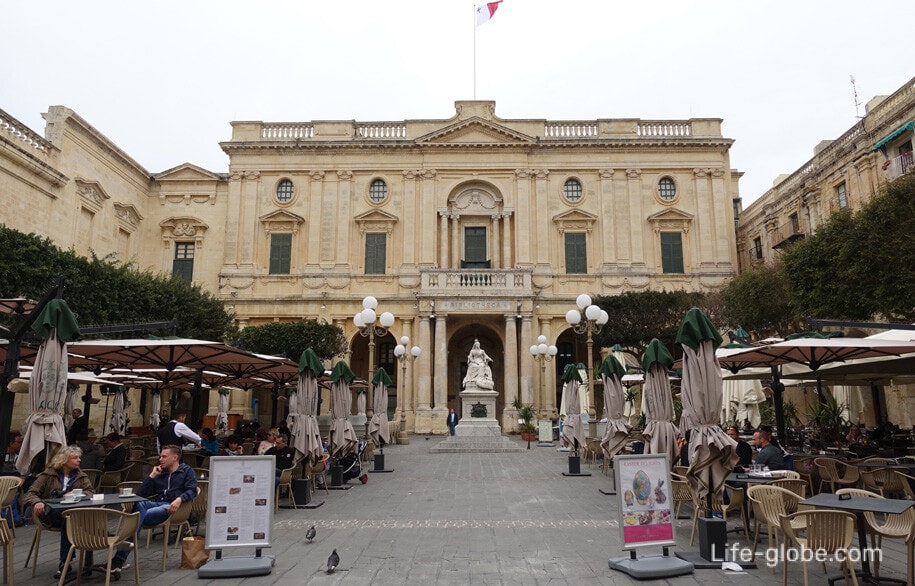
- the house of the National Treasury (Casa del Commun Tesoro), originally built to house the treasures of the order of St. John. Part of the building had the first post office in Malta and for many years was used as government offices, hotel and cinema. Since the beginning of the 20th century there is a gentlemen's club, known as the maltese casino (Casino Maltese). Read more on Republic square in Valletta...
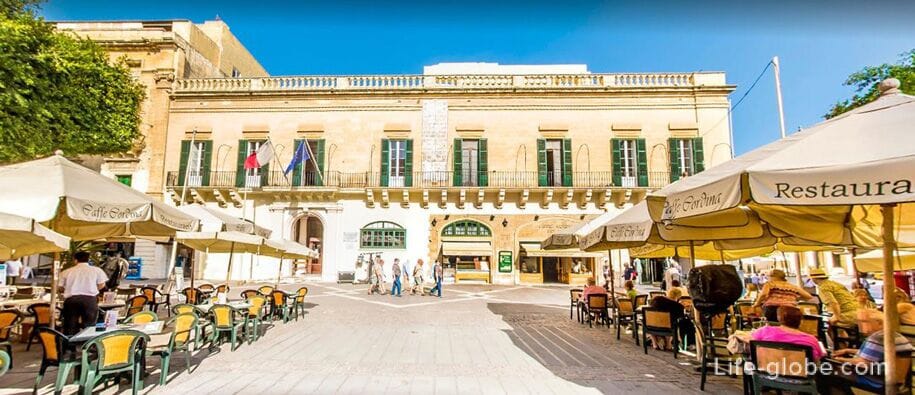
St. George's square or Palace square is the largest square in Republic street.
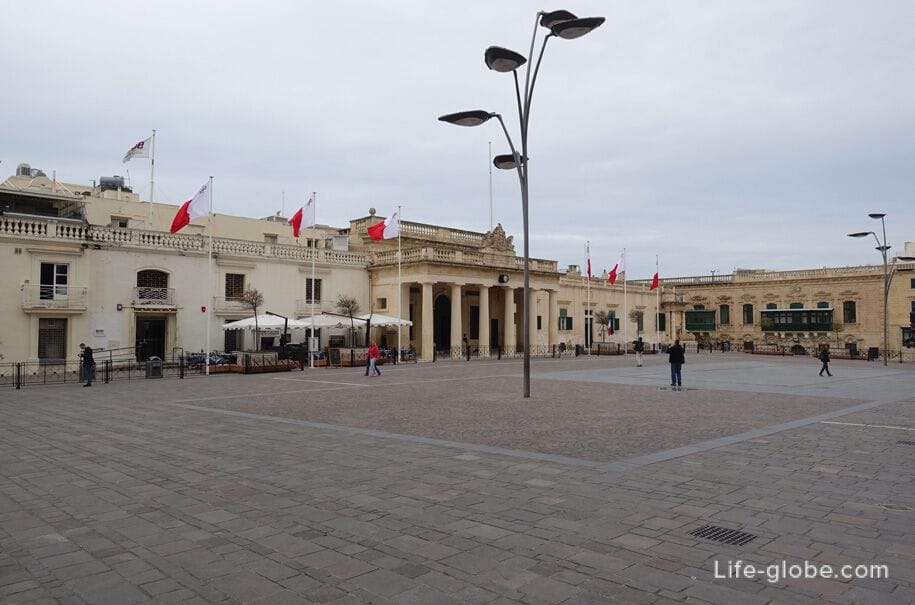
In St. George's square are:
- the Palace of the Grandmasters, officially known simply as the Palace (Il-Palazz tal-Granmastru), built between the 16th and 18th century as the Palace of the Grand Master of the order of St. John.
Currently the building houses the office of the President of Malta. Part of the building, namely the Palace rooms and Armory, are open to visitors as a Museum;
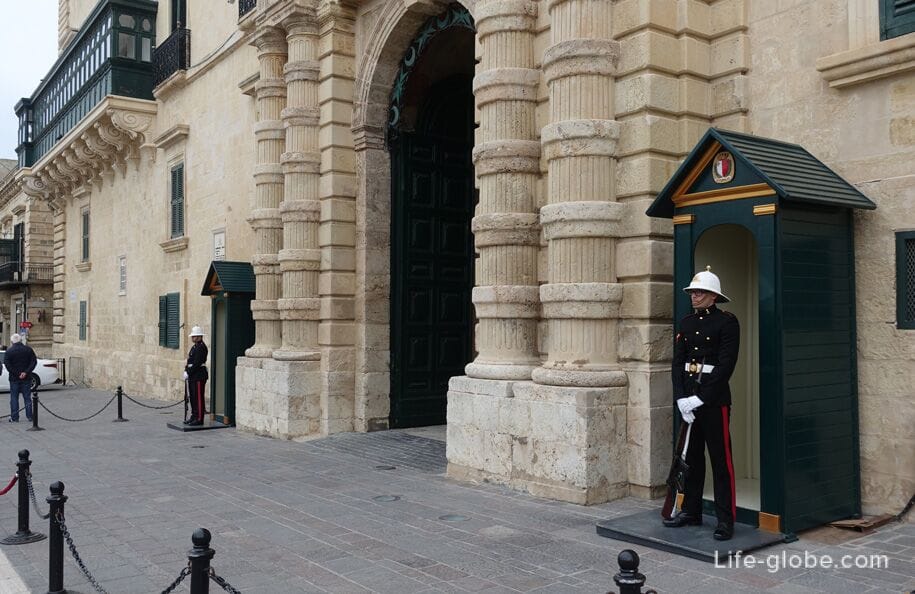
- the building of the main Guard, originally built as a guard post in 1603 by the order of St. John.
In 1814 it was added a neoclassical portico, and the British coat of arms and a memorial inscription, later mounted above the portico. The building currently is the office of the Prosecutor General;
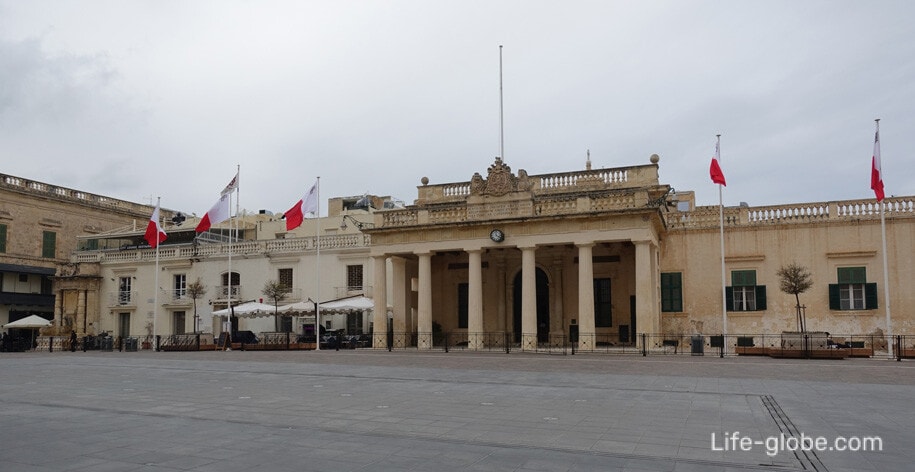
- the monument dedicated to Maltese revolution of 1919. The monument was opened in 1986, is a work of art Maltese sculptor Anton Agius. Read more about St. George's square in Valletta...

Republic Street

La Borsa, also known as the Exchange building - building of the 19th century, which houses the chamber of Commerce, Enterprise and Industry Malta.
Place La Borsa was originally occupied by a house which belonged to the monastery of Castile. In 1853 the house was transferred to the Malta chamber of Commerce, which was formed in 1848. It was demolished to make room for the new facilities that were designed by the Maltese architect Giuseppe Bonavia in the neoclassical architectural style. The new building was opened in March 1857.
Some features within the building include the Lewis Farrugia Courtyard, Sir Agostino Portelli Hall, the Aula Conciliaris (Council Room), the Banif Lecture Hall and the meeting room.
The facade has a symmetrical colonnade. Outwardly simple, but at the same time elegant and contrasting with the traditional architecture of Valletta.

The Spinola Palace (Palazz ta' Spinola), also known as the House of Spinola, is the Palace formerly belonging to the Spinola family between the 17th and 18th centuries. One-third of the building was demolished in the 20th century, but the remaining two wings still exist and are currently used as the head office Lombard Bank.
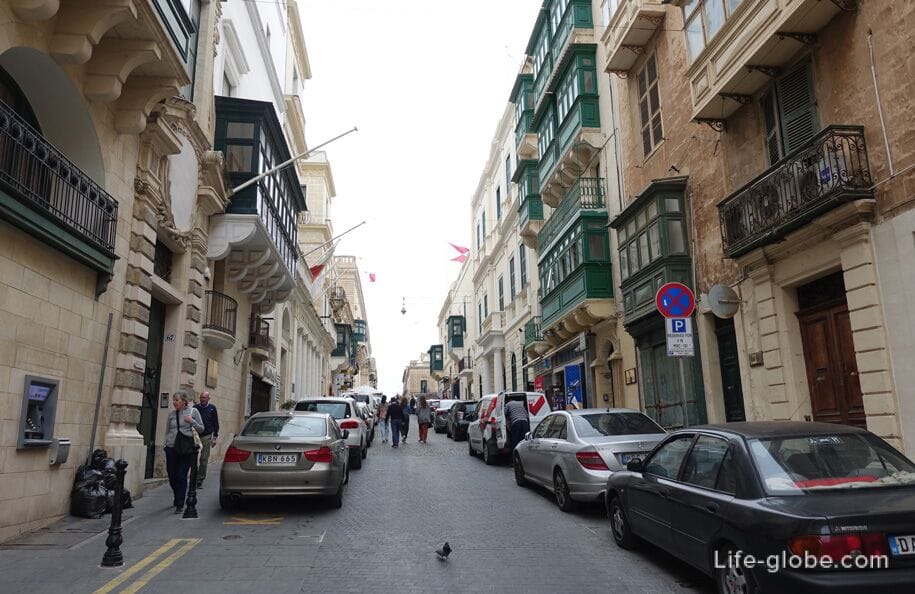
Republic Street
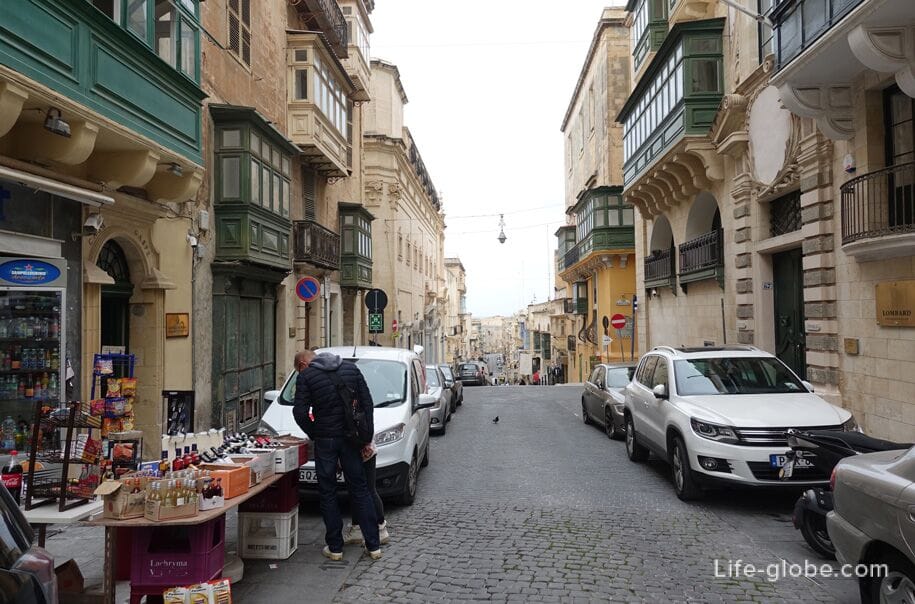

Casa Rossa Piccola - Palace of the 16th century, home of the noble family de Piro.
The building was constructed in 1580, in an era when the knights of St John decided to build a prestigious city to rival other European capitals such as Paris and Venice.
Casa Rossa Piccola was one of two houses built in Valletta by the Admiral Don Pietro La Rocca. On maps of that time, the Palace is referred to as "la casa con giardino" which means "house with garden", as normally houses in Valletta did not have gardens.
Changes at home were made in the late 18th century, in order to split the building into two small houses. Further changes were made in 1918 and before the Second world war were added to the bomb shelters.
You can visit the palace with excursions. The house is furnished with collections of furniture, silver and paintings from Malta and Europe. The archives of the family de Piro are in the archives room of the Palace, they contain detailed records of family and state business relations with the end of the 16th century to the present day. These include business and marriage contracts, bills, wills, and court cases.
Also in the Casa Rocca Piccola is a large private collection of antique costumes in Malta - formal and informal clothing from the 18th to the 20th century.
Malta has a long tradition of lace manufacturing. In palace is a large private collection of Maltese lace. Lace in Malta was used for a variety of occasions, both religious and secular.
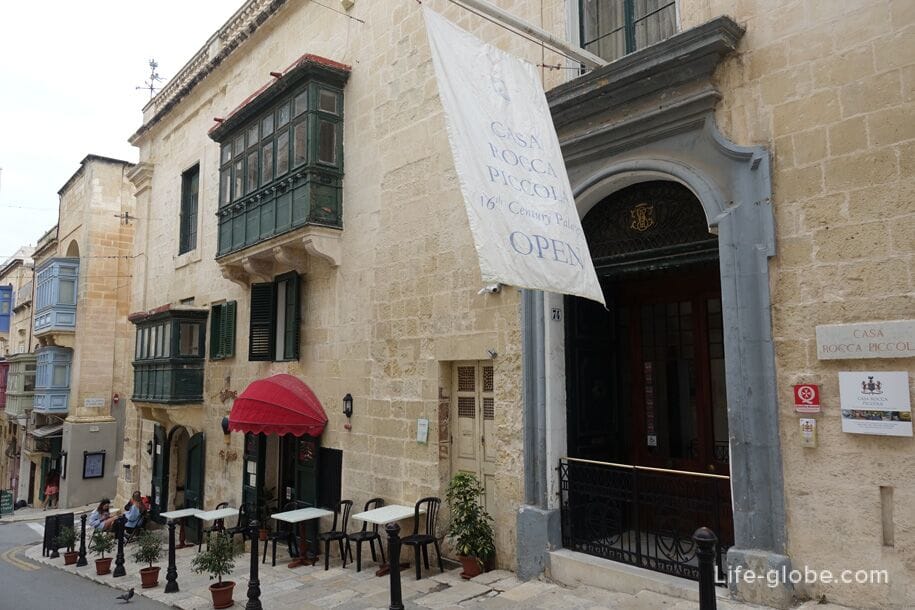
Opposite the Palace of Casa Rocca Piccola is situated the Church of Santa Catherine (Preżentazzjoni tal-Madonna (m.b. Santa Katerina).

Republic Street
